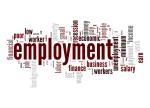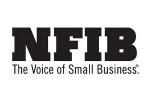CHICAGO — Coming off some of the most challenging years the drycleaning industry has ever faced, it’s only natural to wonder what 2024 has in store. While it’s impossible to accurately predict what this new year will bring, we can use the lessons of the past to anticipate what 2024’s challenges could be and how best to meet them.
Reviewing the Year that Was
Before looking forward, however, let’s take a quick review of the year that just ended and see what kind of momentum the industry has built up. Now that it’s over, most drycleaning industry and business professionals say that 2023 was a definite improvement over 2022.
“Things were still a little up in the air last year,” says Mary Scalco, CEO of the Drycleaning & Laundry Institute (DLI). “We were out of the pandemic — we can say that now — but we still weren’t sure how consumers were going to react.”
Scalco believes that the industry will continue to lose some drycleaning businesses, but the worst should be behind us on that front.
“There was still a shake-up going on in 2023, and while I believe the industry itself has pretty much settled out, I don’t think we’re quite done yet,” she says. “But, by the early part of 2024, we will have settled, and those who are going out of business will have gone out of business. I think you’ll see a little more consolidation, which has been occurring, but I think we’re pretty much at where we’re going to be moving forward.”
The concept of working from home has been the bane of dry cleaners the past few years, says Dawn Avery, interim executive director for the National Cleaners Association (NCA) — a factor that ebbed but did not go away last year.
“With the reduction of people returning to the office, the landscape is going to be different from this point forward,” she says. “While we do have a lot of people going back to the office, either they’re not full-time or they’re disgruntled about it, so they’re like starting their own side gigs. That drops our (number of) pieces — you’re not dressing to go to the office.”
The trend of consolidation in the drycleaning space, where healthier stores bought out their struggling competition, could actually be considered a positive for the industry, says Kermit Engh, owner of Fashion Cleaners in Omaha, Nebraska, and managing partner of consulting firm Methods for Management (MfM).
“There were too many poor operators out there,” he says. “There were too many weak operators. There were too many discount operators. So, (consolidation) allows the strong operator to have better market share and better profitability. That will allow those companies to continue to grow and be strong, and a strong company creates jobs.”
Labor Pains in 2024
One of the biggest challenges experts see in the coming year is a continuation of one of last year’s major concerns: bringing in people who are willing to work.
“Dry cleaners are still finding it very hard to get employees,” Scalco says. “That has carried forward, and I think it’s going to carry forward into the new year. It might just be an accumulation of things, from people retiring early to people deciding that they can do gig work. Everybody is still finding it a challenge.”
So, is this something that will be solved, or is a shortage of labor simply the way going forward?
“There’s no relief in sight,” says economist Chris Kuehl, managing director of Armada Corporate Intelligence. “If there’s one issue that is at the top of the list for everybody, whether it’s small, medium or large businesses, it’s the worker shortage. It’s just pure demographics.”
Part of these demographics is the fact that baby boomers are aging out of the job market — something that Kuehl believes should not have come as a surprise to anyone.
“The powers that be somehow didn’t realize that aging was chronological,” he says. “By the end of this decade, you’ve got every single boomer reaching retirement age. That’s 76 million people. Boomers are notorious for not having lives, so we just keep working. You can do that into your 60s and 70s, but when you start getting into your 80s, people say, ‘I want to enjoy (my) golden weeks. I think I’ll actually quit now.’ And there’s no replacement for them.”
Many independent dry cleaners are having to fight huge companies for workers, and that is not an easy battle to wage.
“You’ve got major corporations that are hiring almost the same level employee that we’re looking for,” Scalco says, “but they’re in a position where they can pay better, and the benefits are a lot more than what we can really afford without raising prices astronomically.”
Competition for a shrinking pool of labor has put many dry cleaners in a tight spot — one where they are forced to change their goals and schedules to accommodate the shortages.
“Because of the lack of employees, a lot of owners are having to work in the business instead of on the business,” Avery says. “We’re seeing a lot of owners jump in and do the deliveries and things they didn’t have to do before.”
For Engh, part of winning the struggle to keep enough people to operate is finding ways to break the cycle of constantly replacing workers.
“I’ve heard statistics that a third of all new hires leave within 90 days, and I have to believe it’s because the onboarding process was inadequate, or that it didn’t exist,” he says. “I think investing in the staff that we have, and investing in onboarding processes and training, should be a major focus to start to slow down the turnover and to start making our industry career-oriented, as opposed to just job-oriented.”
Come back Thursday for Part 2 of this series, where we’ll discuss possible solutions to the labor issue and examine what the economic landscape of the U.S. might be in 2024.
Have a question or comment? E-mail our editor Dave Davis at [email protected].

























































